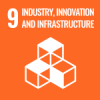A disaster is an event that covers various scopes. The causes of disasters to the impact of disasters are broad and can be studied by various scientific approaches, including exact sciences and social sciences.
“In Indonesia itself, the potential for both natural and social disasters is quite big. Of course, we want our disaster predictions to be accurate so we need fast, complete, accurate, and useful information,” said Barandi Sapta Widartono, Head of Remote Sensing Laboratory, the Department of Earth Technology, UGM Vocational School in the Geographic Information Systems (GIS) UGM webinar on Thursday (10/6).
Barandi also explained this is the role of GIS in the disaster management system. For example, scientific analysis of geology can be related to landslides, and meteorology is related to droughts and floods. In addition, GIS can facilitate disaster management in various scopes from global, national, regional, and even environmental scopes.
“GIS provides results that are trying to model the real-world situation, and there are various scientific approaches to analyze it. Therefore, the results of the analysis of each GIS are often different,” added Barandi.
Barandi said the results of GIS depend on the suitability of the data, the data processing process, and the objectives to achieve from the analysis. For example, mapping the dangers of a volcano will depend on the distance of the location. This is different from the mapping of Covid-19 that maps people’s behavior, such as transportation and washing hands.
“The main point is that GIS is very beneficial, but mapping results depend more on the analysis stage. Therefore, the role of universities is to produce competent human resources from this,” said Barandi.
Currently, there is a spatial data infrastructure to share the data. Thus, analyzing a disaster can be done by various approaches that are closest to the actual situation. In addition, there are currently several GIS applications to assist in the development of disaster management.
“Therefore, the development of disaster knowledge and skills in using GIS is important as the results of the analysis of disaster data can be used in the decision-making process to make accurate decisions that can be useful for the community,” he explained.
Source: https://www.ugm.ac.id/id/berita/21239-peranan-sistem-informasi-geografis-dalam-manajemen-kebencanaan



